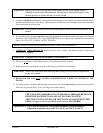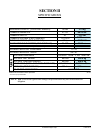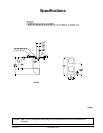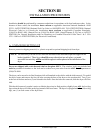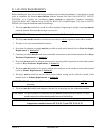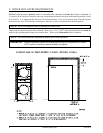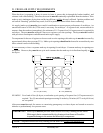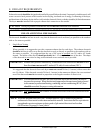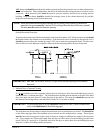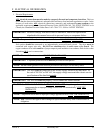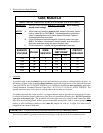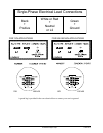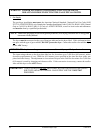
113215-5 www.amdry.com 11
ALL ductwork should be smooth inside with no projections from sheet metal screws or other obstructions,
which will collect lint. When adding ducts, the duct to be added should overlap the duct to which it is to be
connected.
ALL ductwork joints must be taped to prevent moisture and lint from escaping into the
building. Inspection doors should be installed at strategic points in the exhaust ductwork for periodic
inspection and cleaning of lint from the ductwork.
NOTE: When the exhaust ductwork passes through a wall, ceiling, or roof made of combustible
materials, the opening must be 2-inches (5.08 cm) larger than the duct (all the way around).
The duct must be centered within this opening.
Outside Ductwork Protection
To protect the outside end of the horizontal ductwork from the weather, a 90° elbow bent downward should
be installed where the exhaust exits the building. If the ductwork travels vertically up through the roof, it
should be protected from the weather by using a 180° turn to point the opening downward. In either case,
allow at least twice the diameter of the duct between the duct opening and the nearest obstruction.
IMPORTANT: DO NOT use screens, louvers, or caps on the outside opening of the exhaust
ductwork.
2. Multiple Dryer (Common) Venting
If it is not feasible to provide a separate exhaust duct for each dryer, ducts from individual dryers may be
channeled into a “common main duct.” The individual ducts should enter the bottom or the side of the main
duct at an angle not more than 45° in the direction of the airflow. The main duct should be tapered with
the diameter increasing before each individual 8-inch (20.32 cm) duct is added.
IMPORTANT: No more than eight (8) dryers should be connected to one (1) main common duct
(refer to the illustration on the following page).
The main duct may be any shape as long as the minimum cross-sectional area is provided. The illustration
on the following page shows the minimum cross-sectional area for multiple dryer venting. These figures
must be increased in proportion as the result of whatever changes or additions are made to this ductwork
run. Two examples are if ductwork length from last dryer to where duct exits the building exceeds limits
noted (20 feet [6.1 meters]) or, if ductwork runs from last dryer to where duct exits the building has more
than one (1) elbow (including outside protection).



